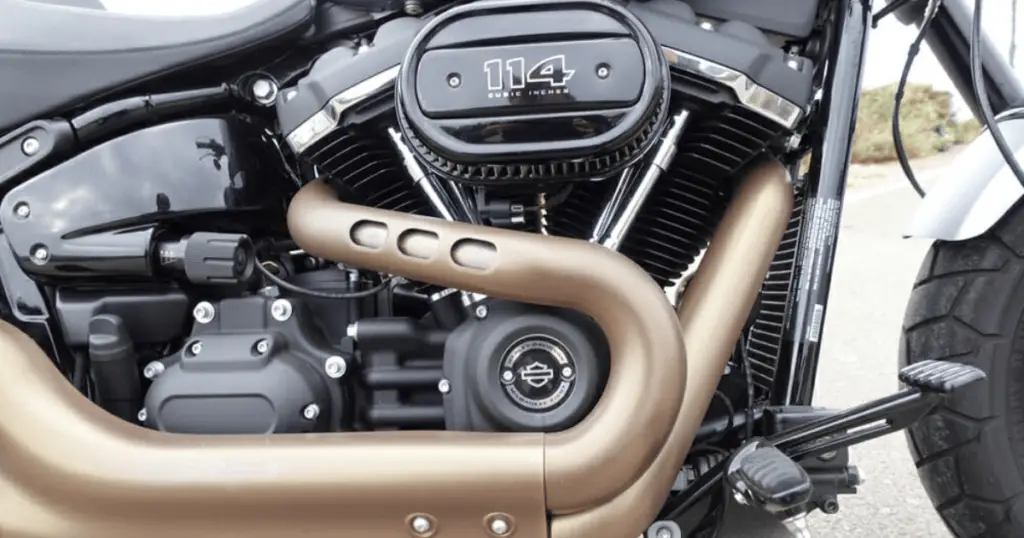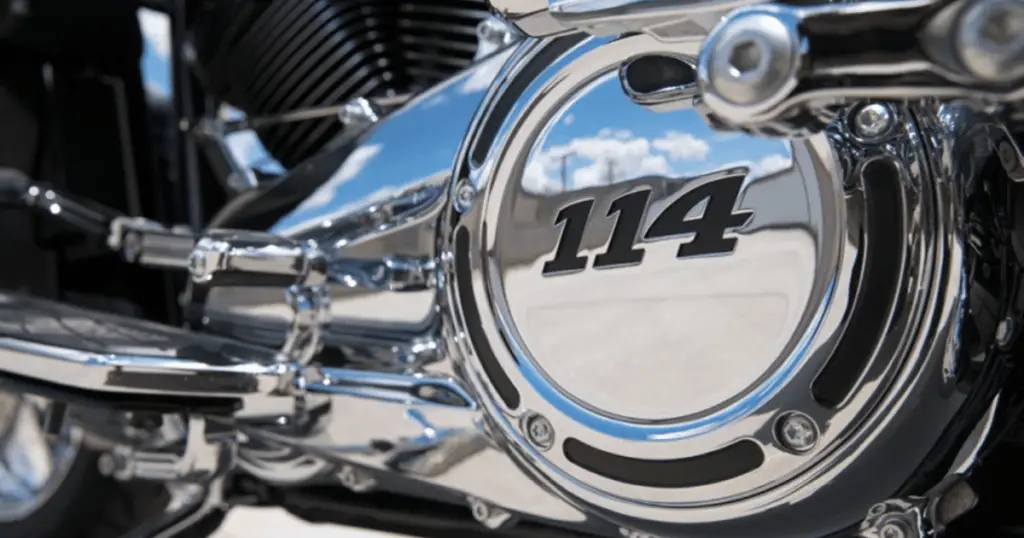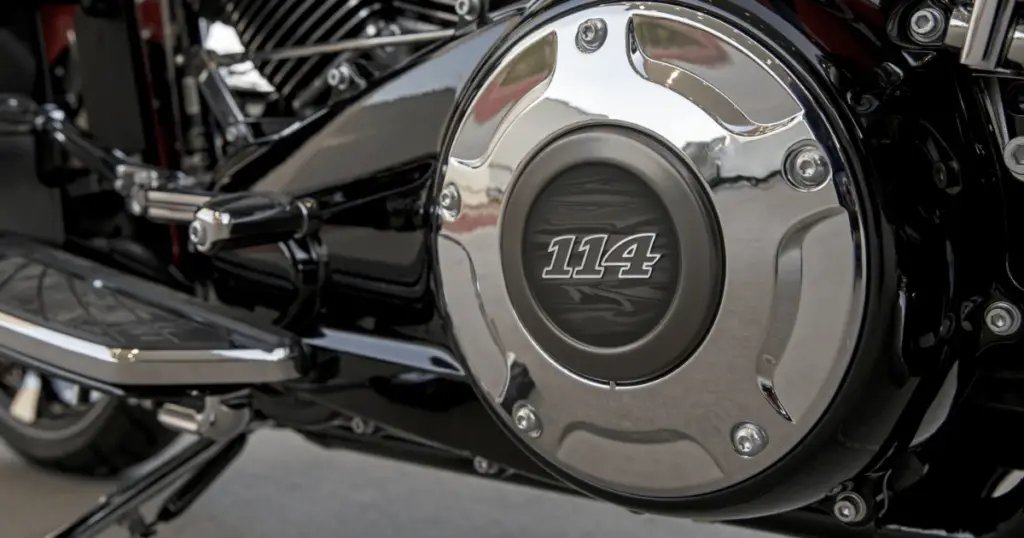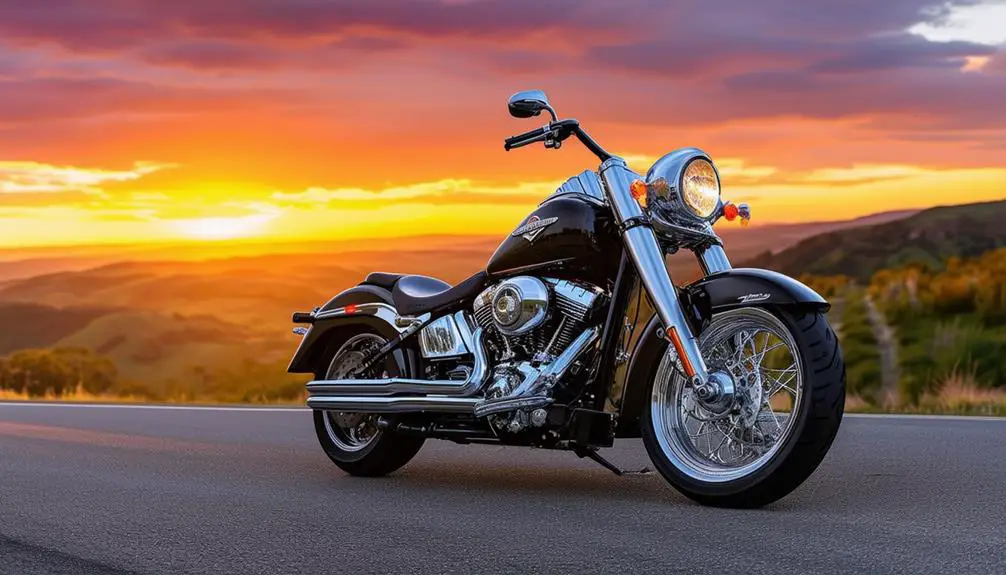When you’re in the market for a motorcycle that promises both power and performance, the Harley-Davidson 114 engine often comes up in conversations. As the heart of some of the most iconic bikes of the brand, the 114 engine, which falls under the Milwaukee-Eight series introduced in 2017, has been turning heads with its impressive displacement and output. If you’re considering it as part of your next ride, understanding what makes the 114 tick could be crucial in making an informed choice.
This powerplant is known for delivering a significant increase in torque and horsepower compared to its predecessors, which translates to a more exhilarating riding experience for you. The larger displacement of the 114 engine, in comparison to the Milwaukee-Eight 107 for example, gives it a leg up in terms of raw power, making it a favored option for those who crave that extra punch on the highway or want to make their presence known on the streets. It strikes a balance between performance and the classic Harley rumble that many riders are looking for.
Beyond just power, the build quality of the Harley 114 engine is also a point of consideration. Harley-Davidson engines are renowned for their durability and the 114 is no exception. It’s designed to withstand the rigors of long rides, making it a reliable choice if you’re someone who loves to take on endless highways or explore new terrains on two wheels. The engine’s robustness, coupled with improved riding dynamics, could make it an excellent centerpiece for your next motorcycle adventure. But is it right for you? Keep reading and we’ll see about it!
Related read: Harley’s Milwaukee 8 Review: Specs, Problems, and More
Introduction To The Harley 114 Milwaukee-Eight Engine

The Harley-Davidson 114 engine is part of the Milwaukee-Eight series, which signifies the lineage of Harley’s big twin engines. This V-Twin powerhouse is known for its balance between performance and refinement. Here, we’ll explore the defining features of this engine, which make it a notable option for your riding adventures.
Displacement and Power:
The “114” in the engine name stands for the displacement of 114 cubic inches, or 1868cc. This translates into a robust level of power that you can feel on the throttle.
- Torque: You can expect an impressive torque delivery, which is vital for quick acceleration and passing power on highways.
- Performance: The engine is engineered for a smooth, cooling ride while maintaining the signature Harley rumble.
Design and Technology:
Harley-Davidson’s commitment to a classic V-Twin look does not prevent them from incorporating modern technology in the Milwaukee-Eight 114 engine. It features:
- Four valves per cylinder, a single-chain-driven cam, and dual spark plugs.
- An advanced exhaust system to meet emission standards without compromising on the characteristic sound.
Remember, the Milwaukee-Eight 114 is not only about raw performance; it’s designed to deliver a smooth experience with reduced vibrations, thanks to its rubber-mounted design.
When it comes to maintaining the health of your Harley 114 engine, frequent care and tune-ups are key. A well-maintained 114 can be a reliable companion on the road, ready to carry you on long cruises or quick jaunts with confidence. So sit back, rev up, and enjoy the ride with one of Harley-Davidson’s most potent engines.
Design and Engineering Characteristics of The Harley 114

When you explore what makes the Harley 114 engine tick, you’re delving into a blend of classic styling and modern technology. This section breaks down the core elements of the 114’s design and engineering, allowing you to understand its raw power and the ingenuity behind its performance.
V-Twin Configuration and Character
The Harley 114 features a V-Twin configuration, renowned for its distinctive rumble and character. The two cylinders set in a V arrangement is a quintessential part of the Harley-Davidson identity, providing not just an iconic sound but also a balance of power and performance. Each cylinder has four valves, operated by a single overhead camshaft (SOHC) per head, improving the engine’s breathing efficiency.
Milwaukee-Eight Technology
Your Harley 114 engine is part of the Milwaukee-Eight family, which includes its sibling, the Milwaukee-Eight 107. This series represents Harley’s commitment to blending tradition with technology; it offers a more refined experience due to lower vibration levels and a counter-balancer. The Milwaukee-Eight also has an enhanced valvetrain, designed for longevity and less maintenance.
Performance and Torque Output
In the power arena, the Milwaukee-Eight 114 engine stands out with a higher torque output than the 107, providing you with an exhilarating ride. With a larger bore (102mm) and a greater stroke (114mm), it achieves a higher displacement, which translates into a beefier torque band—perfect for highway cruising and responsive acceleration.
Engine Cooling System
The cooling system in your 114 engine is stunningly efficient. Opting for the Milwaukee-Eight 114, you get the advantage of the twin-cooled system, which uses coolant to lower the temperature of the heads around the exhaust valves. This innovative cooling approach helps in managing heat better, especially during long rides under higher loads.
Exhaust and Emission
Lastly, with a high-performance engine comes the responsibility of managing exhaust and emissions. The 114’s exhaust system is designed not just for sound but also to meet increasingly stringent emissions standards. Your engine features an advanced catalytic converter and oxygen sensors that help in reducing the bike’s environmental footprint while still keeping that legendary Harley growl.
Related read: Harley 107 vs 114: Specs, Comparisons, and More
Harley 114 Specs and Features
Exploring the heart of the Harley 114 engine, you’ll encounter robust features that boost its performance on the road. Let’s get under the hood and break down the key elements that make up its architecture.
Displacement and Power
The Harley-Davidson Milwaukee-Eight 114 engine boasts a displacement of 114 cubic inches, or 1868 cc, providing a substantial foundation for its power. The power and torque figures are remarkable, offering a solid thrust that can propel you effortlessly on highways and byways.
Compression Ratio and Stroke
Your Harley’s engine showcases a compression ratio of 10.5:1, balancing performance and fuel efficiency effectively. The stroke measures at 4.5 inches, signifying a long stroke length that contributes to the engine’s impressive torque output.
Fueling and Air System
At the core of the engine’s breathability is the fueling system, featuring electronic sequential port fuel injection (ESPFI) that ensures precise fuel delivery. Paired with a ventilator air cleaner, this system guarantees optimal air intake, contributing to the engine’s overall responsiveness.
Transmission and Final Drive
Connected to the powerful Milwaukee-Eight 114 engine is a transmission that efficiently translates power to momentum. It’s a 6-speed cruise drive gearbox that offers smooth transitions between gears. The final drive consists of a belt system, known for its durability and low maintenance, providing a smooth and quiet ride.
Related read: Total Harley 114 vs 117 Comparison – Which Reigns Supreme?
Common Harley 114 Engine Problems To Be Aware Of
The Harley 114 engine often stirs up a mix of opinions. It’s a complex topic—some adore it for its robust performance, while others are wary of its flaws. So, the big question remains: Is the Harley 114 engine worth your attention? Let’s talk problems you might encounter.
Radiator Problems
One common issue with the Harley 114 engine is its radiator, which can be prone to sediment build-up, affecting the cooling system and potentially leading to overheating.
How to Spot and Fix: Keep an eye out for coolant leaks or signs of overheating. Regular maintenance, including radiator flushing, is crucial. Replace any faulty parts to keep the cooling system in top shape.
Oil Sumping
Oil sumping, where oil collects in the wrong places like the crankcase, is another notable problem. This can put stress on the engine, leading to damage.
Identifying and Fixing: Monitor the cam chain tensioners and promptly replace any damaged supply lines. Consider updating the head gasket and opting for better-quality oil filters.
Clutch Issues
Clutch problems can also arise, making it difficult to shift gears and posing a risk of accidents. This often stems from an internal fluid leak.
Detection and Solution: Address fluid leaks as soon as possible. If gear shifting becomes a challenge, seek professional help.
Overheating
Overheating is a frequent complaint with the Harley 114 engine, often related to radiator issues or oil sumping.
Preventive Measures: Adhere to a regular maintenance schedule to prevent overheating. Ensure the radiator and oil supply line are in good condition.
Oil Aeration
Oil aeration, or air getting trapped in the oil, increases stress on engine components, potentially causing damage.
Difference from Oil Sumping: Unlike oil sumping, oil aeration involves air bubbles in the oil, affecting engine performance.
How to Address: Regular checks and immediate action for damaged supply lines can help prevent oil aeration. Keep the oil system in top condition with quality parts and filters.
Cam Chain Tensioners
Wear on the cam chain can lead to reduced tensioner performance, risking engine failure.
Similarity to Twin Cam Motors: This issue is not unique to the Harley 114 engine but can also occur in twin cam motors due to wear and tear.
Preventive Action: Regular inspections and prompt replacement of worn parts are crucial. Always use genuine parts to avoid further damage.
Additional Concerns
Beyond the major issues, Harley 114 engine owners have reported other minor but impactful problems.
Engine Vibration and Noise: Excessive vibration at high speeds and loud engine noises have been reported, possibly due to imbalance or loose parts.
Recall Notices
Harley-Davidson has issued recalls for the oil pump in some Milwaukee 8 engines, including the 114 engine, due to insufficient oil supply under certain conditions.
What to Do: Affected owners should visit an authorized dealer for a free oil pump replacement.
Overview of Recommended Maintenance and Typical Longevity
Maintaining your Harley 114 engine is key to ensuring both its longevity and reliability, particularly if you enjoy long-distance touring. Adhering to a strict maintenance schedule and understanding the intricacies of the engine’s oil system can go a long way in preserving the engine’s performance.
Routine Maintenance
- Check Oil Levels: Before long rides, ensure your oil levels are adequate.
- Service Intervals: Stick to regular maintenance intervals; typically every 5,000 miles or annually.
- Inspection: Regularly inspect for any signs of wear or issues like wet sumping.
Oil and Lubrication System
- Oil Type: Use 20W-50 synthetic oil to maintain optimal engine performance.
- Oil Capacity: Ensure you know the correct oil capacity for proper lubrication.
- Monitoring: Keep an eye on oil aeration, which can cause engine damage if unaddressed.
Already have a 114 and looking for more bang for your buck? Check this out: 4 Candidates for The Best Tuner for Milwaukee 8 114 Engines
How Long Does The 114 Typically Last?
With diligent maintenance, the Harley 114 engine can reliably serve between 80,000 to 100,000 miles, with some surpassing 150,000 miles without major issues.
Comparative Performance Against Other M8 Engines

Understanding the differences in performance between the Harley 107 and 114 engines is crucial when you’re considering your options. Your choice will directly impact your riding experience in terms of torque output, horsepower, acceleration, and overall speed.
Harley 107 vs 114 Engines
| Specs | Milwaukee-Eight 107 | Milwaukee-Eight 114 |
|---|---|---|
| Bore | 100mm | 102mm |
| Stroke | 111.1mm | 114mm |
| Displacement | 107 cu in (1,746 cc) | 114 cu in (1,868 cc) |
| Compression Ratio | 10.0:1 | 10.5:1 |
The Harley 107 is your stepping stone into the Milwaukee-Eight engine family, offering respectable performance that’s both smooth and efficient. Torque output for the Harley 107 hovers around 111 lb-ft, which is generous for relaxed cruising scenarios.
However, the Milwaukee-Eight 114 bumps that torque up further. You’ll feel the difference mainly due to the 114 engine’s greater displacement, which translates to more power; specifically, around 119 lb-ft of torque. Horsepower also sees a jump, adequately satisfying your need for acceleration and a bit more speed.
Milwaukee-Eight 107 vs 114 Comparison
When comparing the Milwaukee-Eight 107 and 114 directly:
- Acceleration: The 114’s larger displacement gives you quicker throttle response and more robust acceleration.
- Speed: With similar setups, the 114 typically has a higher top speed due to the increased horsepower.
Let’s put it in perspective with some numbers: the Milwaukee-Eight 107 churns out close to 84-86 horsepower, while the Milwaukee-Eight 114 pushes the envelope closer to 90-92 horsepower.
Frequently Asked Questions
When considering the Harley 114 engine, you might have a few questions about its performance, common issues, and how it compares to other Harley engines like the 107 and 117. Here, we address some of the top queries.
How does the Harley 114 engine’s performance compare to other engines in its class?
The Harley 114 engine offers a significant increase in displacement over its predecessor, the 107, which translates to more power and torque, thereby providing a superior performance that is often noticeable during acceleration and highway cruising.
What are some common issues with the Harley 114 engine?
Some reported issues with the Harley 114 engine include difficulties with cold starting, oil aeration, and wet sumping. If these problems are not addressed, they can lead to more serious engine damage.
How does the Harley 114 engine’s horsepower factor into its overall reliability?
With approximately 100.5 horsepower, the Harley 114 engine is designed to deliver a reliable performance for everyday riding and long-distance touring, given that routine maintenance is conducted to prevent any horsepower-related strains on the engine.
In what ways do the Harley 107 and 117 engines differ from the 114?
The Harley 107, 114, and 117 engines are part of the Milwaukee-Eight series, where the 114 stands in the middle with a balance of power and torque. The 107 has a lower displacement and the 117 is the largest, making these engines cater to different rider preferences for performance.
Can you provide specifications for the Harley 114 engine?
Specifications for the Harley 114 engine include a displacement of 114 cubic inches (1,868cc), producing around 124 ft-lb of torque at 3,250 rpm, and a compression ratio of 10.5:1, marking it as a robust option in the Harley engine lineup.







Leave a Reply
You must be logged in to post a comment.